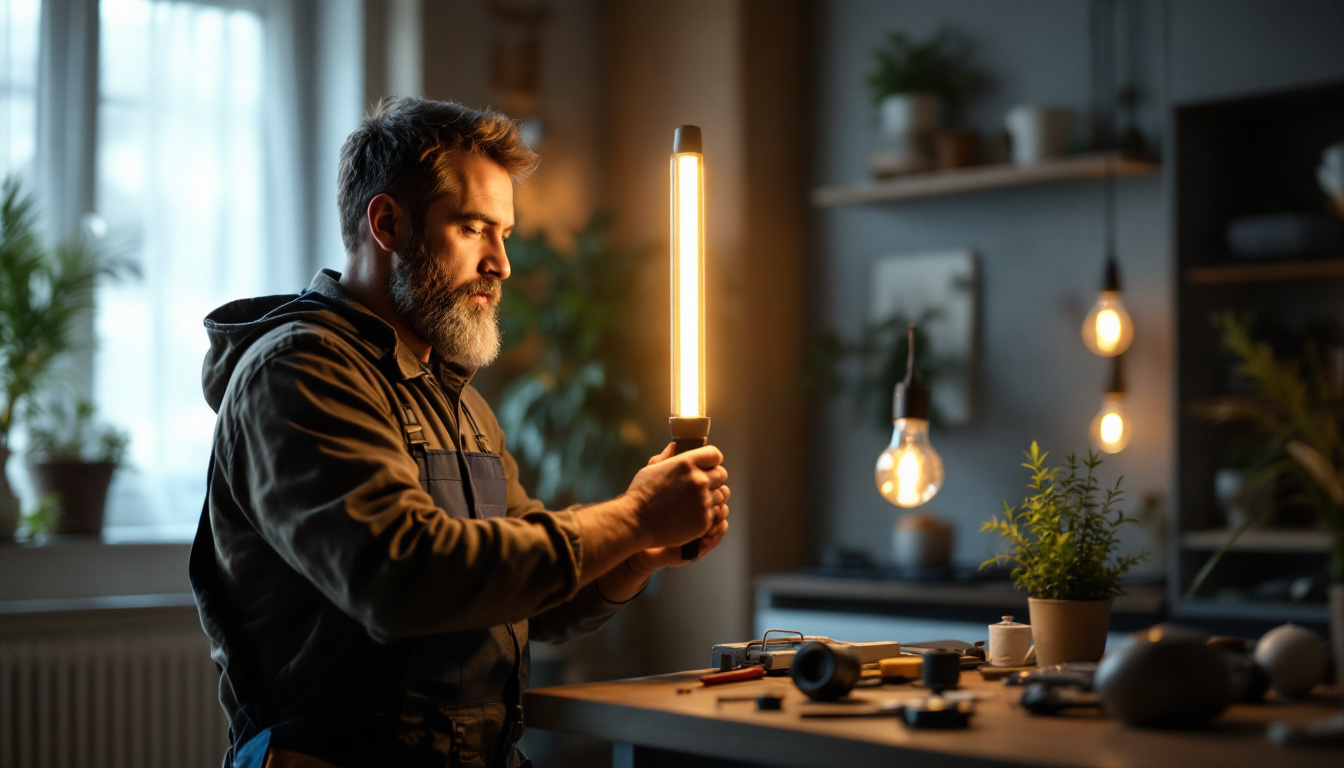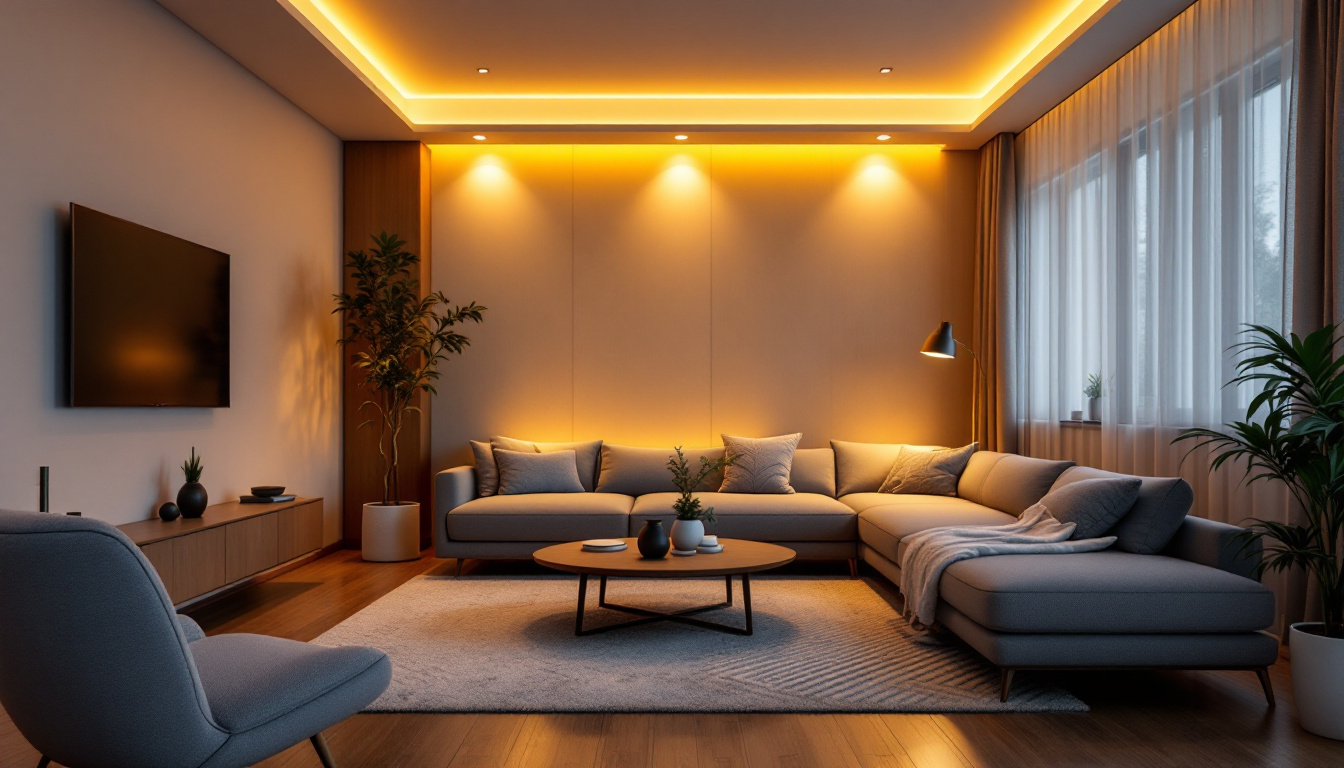
As the demand for energy-efficient lighting solutions continues to rise, many lighting contractors are exploring the benefits of LED technology. One common task that often arises is bypassing the ballast in traditional fluorescent fixtures to accommodate LED bulbs. This comprehensive guide will delve into the process of bypassing ballasts, the advantages of LED lighting, and essential safety measures to consider.
Before diving into the bypassing process, it’s crucial to understand what a ballast is and its role in lighting systems. A ballast regulates the current to the lamps and provides the necessary voltage to start the lamp. In fluorescent fixtures, ballasts are essential for proper operation, but they can be a hindrance when transitioning to LED technology. The ballast not only controls the electrical flow but also helps to stabilize the light output, ensuring that the lamp operates within its designed parameters. However, as technology advances, the limitations of traditional ballasts become more apparent, especially when considering the efficiency and longevity of modern LED solutions.
There are two primary types of ballasts: magnetic and electronic. Magnetic ballasts are older technology, often found in older fluorescent fixtures. They are heavier and less efficient compared to their electronic counterparts. Typically, these ballasts operate using a transformer and inductors, which can create flickering and buzzing sounds when in use. Electronic ballasts, on the other hand, are lighter and more energy-efficient, utilizing electronic circuits to regulate the current. This not only allows for a more stable light output but also enables features like dimming and instant start capabilities. However, they can still pose compatibility issues with LED bulbs, as the electronic components may not be designed to handle the lower wattage and different electrical characteristics of LEDs.
Bypassing the ballast can lead to several advantages. First and foremost, it enhances energy efficiency, as LED bulbs consume significantly less power than traditional fluorescent lamps. This reduction in energy consumption not only lowers electricity bills but also contributes to a smaller carbon footprint, making it an environmentally friendly choice. Additionally, bypassing the ballast simplifies the lighting system, reducing the number of components that can fail over time. This can lead to lower maintenance costs and improved reliability. Furthermore, without the ballast, the LED bulbs can operate at their optimal performance level, providing brighter and more consistent lighting. This is particularly beneficial in commercial settings where lighting quality can impact productivity and ambiance. Moreover, the elimination of the ballast reduces heat generation, which can prolong the lifespan of the LED bulbs and enhance safety by minimizing the risk of overheating in fixtures.
Before beginning the bypass process, proper preparation is essential. This includes gathering the necessary tools and ensuring a safe working environment. A well-prepared workspace will facilitate a smoother and more efficient installation. Taking the time to organize your tools and materials can save you from unnecessary interruptions during the project, allowing you to focus on the task at hand.
To successfully bypass a ballast, the following tools and materials are typically required:
In addition to these basic tools, you may also want to consider having a multimeter on hand. This device can help you measure voltage and ensure that your electrical connections are secure and functioning properly. Furthermore, having a flashlight or work light can be beneficial, especially if you’re working in dimly lit areas. Proper lighting will not only enhance visibility but also reduce the risk of accidents.
Safety should always be a top priority when working with electrical systems. Here are some essential precautions to consider:
Additionally, it’s wise to familiarize yourself with the specific electrical codes and regulations in your area. Different regions may have unique requirements that must be adhered to for safety and compliance. If you are unsure about any aspect of the bypass process, consulting with a licensed electrician can provide peace of mind and ensure that the work is done correctly. Remember, taking these precautions not only protects you but also contributes to the overall safety of your home and its electrical system.
Now that the preparations are complete, it’s time to proceed with the actual bypassing of the ballast. The following steps outline a typical process for bypassing a ballast in a fluorescent fixture.
Begin by carefully removing the cover of the fluorescent fixture. This usually involves unscrewing or unclipping the cover. Take care not to damage the fixture or any components during this process.
Once the cover is removed, locate the ballast. Disconnect the wires leading to the ballast, taking note of their connections for reference. It’s advisable to take a photo or make a diagram to ensure proper reconnection later.
With the ballast removed, the next step is to wire the LED bulbs directly to the fixture. Depending on the type of LED bulb being used, the wiring configuration may vary. Typically, the line voltage will connect directly to the socket terminals. Ensure that all connections are secure, and use electrical tape or wire nuts to insulate any exposed wires.
Before replacing the fixture cover, it’s crucial to test the installation. Turn the power back on at the circuit breaker and check if the LED bulbs illuminate correctly. If they do not, double-check the wiring connections and ensure that the bulbs are properly seated in their sockets.
Once the testing is complete and successful, reattach the fixture cover. Ensure that all screws are tightened and that the fixture is securely mounted. This will help prevent any future issues related to loose components.
Transitioning to LED lighting offers numerous benefits that can enhance both the performance of a lighting system and the overall satisfaction of clients. Understanding these advantages can help lighting contractors make informed decisions when recommending products to customers.
One of the most significant advantages of LED bulbs is their energy efficiency. LEDs consume up to 80% less energy than traditional incandescent bulbs and about 50% less than fluorescent lamps. This not only reduces electricity bills for clients but also contributes to a smaller carbon footprint.
LED bulbs have a much longer lifespan compared to traditional lighting options. While incandescent bulbs may last about 1,000 hours and fluorescent bulbs around 10,000 hours, LED bulbs can last up to 25,000 hours or more. This longevity translates to fewer replacements and reduced maintenance costs for clients.
LED technology provides superior light quality, offering brighter illumination with better color rendering. This is particularly beneficial in commercial settings where accurate color representation is essential. Furthermore, LEDs are available in a variety of color temperatures, allowing for greater customization to meet specific lighting needs.
While bypassing ballasts for LED installations can be straightforward, several challenges may arise during the process. Being aware of these potential issues and their solutions can help contractors navigate the installation more effectively.
One common challenge is ensuring that the LED bulbs are compatible with the existing fixture. Not all LED bulbs are designed for ballast bypass, so it’s crucial to select bulbs specifically labeled as “ballast bypass” or “direct wire.” Always check the manufacturer’s specifications before purchasing.
Another challenge is ensuring compliance with local electrical codes. Different regions may have specific regulations regarding electrical installations. It’s essential for contractors to familiarize themselves with these codes to avoid potential fines or safety hazards. Consulting with local authorities or electrical inspectors can provide clarity on compliance requirements.
Educating clients about the benefits of LED lighting and the bypassing process is vital. Many clients may be hesitant to switch from traditional lighting due to misconceptions or lack of understanding. Providing clear information about energy savings, longevity, and light quality can help clients make informed decisions and feel confident in their investment.
Bypassing the ballast for LED installations is a valuable skill for lighting contractors. It not only enhances the efficiency and performance of lighting systems but also positions contractors as knowledgeable professionals in the evolving landscape of lighting technology. By following the steps outlined in this guide, contractors can confidently navigate the bypassing process while ensuring safety and compliance.
As the industry continues to shift towards more sustainable lighting solutions, embracing LED technology will be crucial for success. Understanding the benefits, challenges, and best practices for bypassing ballasts will empower contractors to provide exceptional service and meet the growing demands of their clients.
Ultimately, staying informed and adaptable in this ever-changing field will lead to a brighter future for both contractors and their clients alike.
Ready to take your lighting projects to the next level? At LumenWholesale, we provide lighting contractors with the highest quality, spec-grade LED products at prices that can’t be beaten. Say goodbye to unnecessary markups and hello to a vast selection of reliable lighting options that meet the strictest industry standards. Plus, with free shipping on bulk orders, you can stock up on everything you need while enjoying the best value. Don’t compromise on quality or price. Wholesale Lighting at the Best Value is just a click away. Upgrade your lighting solutions with LumenWholesale today.

Discover how LED lighting technology can be a game-changer for lighting contractors looking to win more bids.

Discover the essential facts about long lamp bulbs that every lighting contractor needs to know.

Discover the ultimate guide to LED replacement can lights, covering everything from installation tips to energy-saving benefits.

Discover how choosing the right fluorescent lamp types can streamline operations for lighting contractors, reducing costs and saving time.